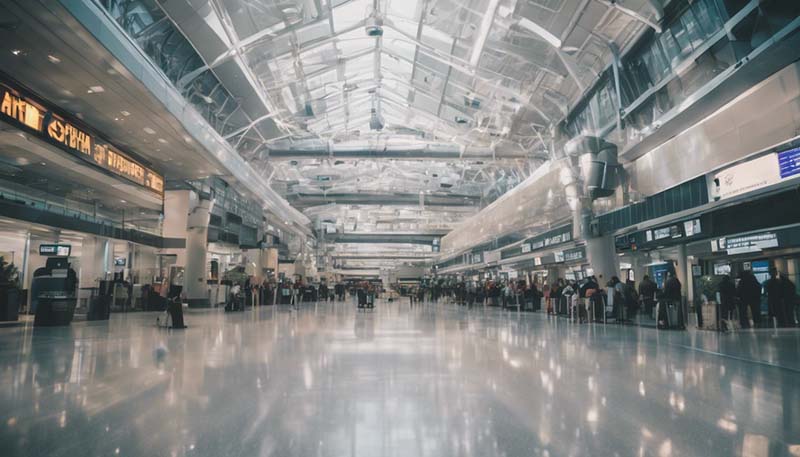The Role of Airports in Driving Economic Growth and Development
Airports have long been considered as vital components of modern transportation systems, playing a crucial role in connecting cities, countries, and continents. They are not only transportation hubs but also important drivers of economic growth and development. This article aims to explore the multifaceted role of airports in fostering economic growth and development, examining their impact on various sectors such as tourism, trade, and employment, as well as their potential to contribute to sustainable development.
Airports as Economic Engines
Airports are often referred to as economic engines, as they generate significant economic activity and contribute to the overall growth of an economy. The economic impact of airports can be broadly categorized into three areas: direct, indirect, and induced effects.
Direct effects refer to the economic activities generated by the airport itself, such as the construction and maintenance of airport infrastructure, the operation of airport facilities, and the provision of services to passengers and airlines. These activities create jobs and generate revenue for the airport and its partners.
Advertisement
Indirect effects are associated with the businesses and industries that rely on airports for their operations, such as airlines, ground transportation providers, and cargo handlers. These businesses, in turn, create jobs and generate revenue, further stimulating economic growth.
Induced effects arise from the spending of employees working in the airport and its related industries. As these individuals earn income, they spend a portion of it on goods and services in the local community, creating a multiplier effect that benefits the broader economy.
Airports and Tourism
Tourism is a significant contributor to the global economy, and airports play a vital role in facilitating the movement of tourists. By connecting destinations and making travel more accessible, airports stimulate demand for tourism-related services such as hotels, restaurants, and attractions. This, in turn, generates revenue and creates jobs in the local community.
Moreover, airports can also act as catalysts for the development of new tourism infrastructure and attractions. For instance, the construction of a new airport can spur the growth of a previously underdeveloped region, turning it into a popular destination for tourists. This can lead to the creation of new jobs, the development of local businesses, and increased tax revenue for the government.
Airports and Trade
Airports are essential components of global trade, as they facilitate the transportation of goods and services across borders. Air cargo is particularly important for the movement of high-value, time-sensitive goods, such as electronics, pharmaceuticals, and perishable items. By enabling the rapid and efficient transport of these goods, airports contribute to the growth of international trade and the overall economy.
In addition to facilitating trade, airports can also act as hubs for the distribution of goods. For example, a regional airport may serve as a central hub for the distribution of goods to nearby cities and towns, reducing transportation costs and increasing the efficiency of the supply chain.
Airports and Employment
Airports are significant sources of employment, providing a wide range of job opportunities for individuals with varying skill levels and educational backgrounds. Direct employment in the airport sector includes positions in airport management, maintenance, security, and customer service, among others. Indirect employment is generated through the businesses and industries that rely on airports, such as airlines, ground transportation providers, and cargo handlers.
In addition to creating jobs, airports can also contribute to the development of human capital by providing training and education opportunities. For instance, many airports offer apprenticeships and internships to local residents, enabling them to gain valuable work experience and develop the skills needed to succeed in the job market.

Airports and Sustainable Development
While airports have historically contributed to economic growth and development, there is growing concern about their potential negative impacts on the environment and local communities. As such, there is a growing emphasis on the need for airports to adopt sustainable development practices that minimize their environmental footprint and promote social and economic well-being.
Some strategies for promoting sustainable development in the airport industry include:
- Investing in energy-efficient infrastructure and technologies, such as solar panels and LED lighting, to reduce greenhouse gas emissions and operating costs.
- Implementing noise abatement measures, such as preferential runway use and nighttime curfews, to minimize the impact of aircraft noise on local communities.
- Developing public transportation connections, such as rail links and bus services, to reduce traffic congestion and air pollution from ground transportation.
- Promoting community engagement and collaboration, by involving local stakeholders in airport planning and decision-making processes, and supporting community development initiatives.
Conclusion
In conclusion, airports play a critical role in driving economic growth and development by connecting cities, facilitating trade, and generating employment opportunities. However, it is essential for the airport industry to adopt sustainable development practices that balance economic growth with environmental and social considerations. By doing so, airports can continue to contribute to the prosperity and well-being of the communities they serve.